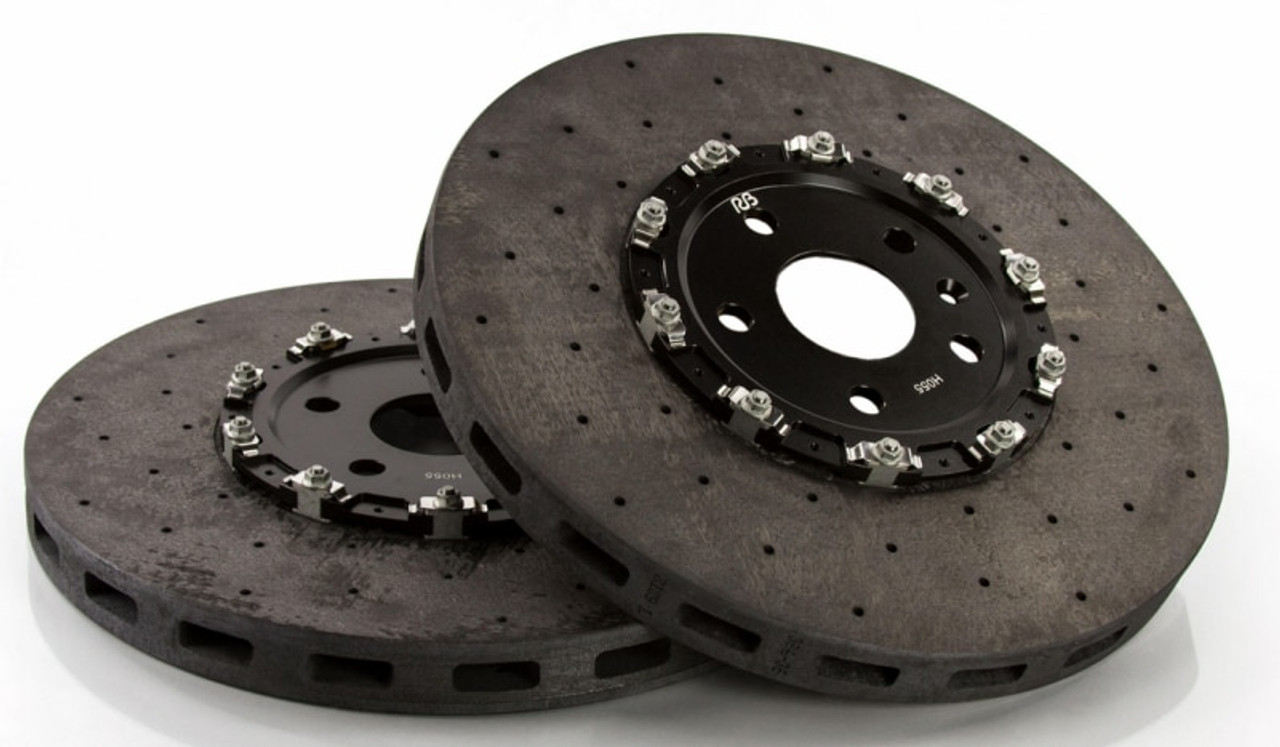Automotive Carbon Ceramic Brakes are increasingly making their way into high-performance and luxury vehicles due to their superior braking abilities over traditional brake materials. Made from a carbon-fiber-reinforced ceramic silicon carbide composite, carbon ceramic brake rotors and pads provide significantly improved braking performance over traditional cast iron or aluminum brake rotors. In this article, we will take an in-depth look at carbon ceramic brakes, their benefits over conventional brakes, and their use in modern vehicles.
Automotive Carbon Ceramic Brakes consist of carbon-fiber-reinforced ceramic brake rotors and carbon composition brake pads. The rotors are made from a silicon carbide ceramic matrix composite that is reinforced with woven carbon fibers. This gives the rotors high strength and hardness, as well as very low weight. Carbon ceramic brake rotors can be up to 50% lighter than equivalent cast-iron rotors while being over three times as strong.
The lightweight yet ultra-strong properties of carbon ceramic brake rotors allow them to dissipate heat much faster than conventional brakes. They also have exceptionally high temperature thresholds before fading sets in. Carbon ceramic brake pads are made from a carbon-based composite rather than traditional semi-metallic or low-metallic brake pad compositions. This allows the pads to tolerate the rapid heat cycles produced by the rotors without deterioration of the friction material.
Benefits Over Traditional Brakes
The key performance benefits of Automotive Carbon Ceramic Brakes stem from the unique properties of the materials used:
Reduced Weight – Carbon ceramic rotors can weigh up to 50% less than cast iron, reducing unsprung and rotating mass for better acceleration, handling, and braking feel. Lighter weight also reduces environmental impact.
Increased Braking Power – Carbon ceramic rotors dissipate heat up to 10 times faster than steel. They can withstand braking from speeds over 200 mph without fading. Braking performance is more consistent lap after lap of high-speed track use.
Extended Pad Life – Carbon pads are more durable and tolerate the extreme heat of carbon ceramic rotors without breaking down. Pad life can be extended 2-3 times over conventional pads.
Improved Feedback – The lightweight yet extremely stiff carbon ceramic rotors deliver better brake pedal feel and response. Drivers experience more confident controls.
Corrosion Resistance – Carbon ceramic rotors are inert and do not corrode. Braking performance is maintained over the long-term without surface degradation issues.
Uses In High-Performance Vehicles
Due to their superior track capabilities, Automotive Carbon Ceramic Brakes are popular upgrades for high-performance sports cars and supercars driven in spirited conditions. Some notable factory applications include:
– Porsche 911 GT2/GT3, 918 Spyder, Cayenne Turbo – Standard feature due to extreme capabilities required.
– McLaren F1, P1, 720S – Help deliver braking to match 800+ hp outputs.
– Ferrari LaFerrari, FXX K, SF90 Stradale hybrid – Keep some of the world’s most powerful exotics under control.
– Lamborghini Huracán Performante, Aventador SVJ – Help tame V10/V12 monsters on road and track.
– Nissan GT-R NISMO – Boost braking for time attack/drift specialty model.
– BMW M5/M8, Mercedes-AMG GT – Gain an edge in luxury super sedans/coupes.
Price And Maintenance Considerations
While Automotive Carbon Ceramic Brakes confer multiple dynamic advantages, there are some tradeoffs to consider:
– Cost – Factory fit carbon ceramic brakes typically increase a vehicle’s base price by $10,000-20,000 compared to conventional steel brakes.
– Repairability – Carbon ceramic rotors cannot be resurfaced like steel rotors. If worn or damaged, the entire rotor must be replaced at a cost of $3,000-8,000 per axle depending on the application.
– Brake Dust – Carbon dust from pads is harder than usual for wheels. More frequent cleaning is needed to prevent buildup.
– Noise – Some drivers report more road noise from carbon ceramic brakes compared to more sound-insulated cast iron discs.
– Feel – While featherlight, some find the pedal action too sharp versus standard setups suited for daily commutes.
*Note:
1. Source: Coherent Market Insights, Public sources, Desk research
2. We have leveraged AI tools to mine information and compile it




